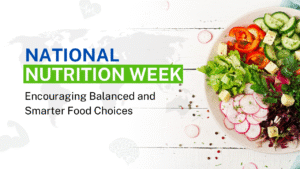
We all know that good nutrition especially for children from birth to 24 months is vital for healthy growth and development. Parents and caregivers need credible, clear, and consistent information to help infants and toddlers get a healthy start in life. Children with healthier eating patterns in their first year of life are more likely to have healthier eating patterns as they grow older. Medical professionals can play a critical role in ensuring that children develop healthy eating patterns during their first 2 years of life. We hope that you continue to discuss the importance of developing healthy eating patterns during your patients’ well visits. These quick and easy-to-use resources can help parents with their family’s journey towards a healthier life.
Ready to feed your 6 to 24 month old?
Mealtime can be a messy and fun learning experience. Your child may have about 3 meals and 2 to 3 snacks every day. Having a routine can help children know what to expect when it is time for meals or snacks.
Here are some routines and tips for mealtimes:
- Clean
Wash your child’s hands before mealtime.
Worried about a mess? You can put newspaper or a plastic mat on the floor under your child’s high chair or booster seat. This can help with cleanup.
- Be Safe
Sit your child in a safe place.
A high chair or booster seat are good options.
Strap your child into his or her seat.
Watch your child at all times.
- Focus
Face your child toward you or other family members at the table.
- Limit distractions.
Avoid letting TV, videos, cell phones, or pets distract your child from eating. These can also distract you too. Focus on your child during mealtimes.
Did You Know?
Children should not watch screens. The American Academy of Pediatrics recommends children avoid using screens until they are 18 months old, unless video-chatting with friends or family. Talk with your child during mealtimes. This can be a fun time, and it is important for your child to have your attention.
Mealtimes can last 10 or 15 minutes, or for as long as your child can pay attention.
- Fingers, spoons, forks, and cups
When your baby first starts eating foods, you may use a spoon or your baby may use his or her fingers.
As your child gets older, he or she will develop different skills to help with mealtimes. Use dishes and cups that are not breakable and do not have sharp edges.
- Family meals
Sitting down as a family for mealtime can teach your child how to eat and helps your child develop social skills. Give your child healthy food options at each meal. Model healthy eating.
- Amount
Let your child decide how much to eat. Your child does not have to finish all the food on his or her plate or drink all the liquid in the cup or bottle.
- Did You Know?
Children may eat different amounts of food each day.
This is normal. Talk with your child’s doctor or dietitian if you are concerned about how much, or how little, your child is eating.





